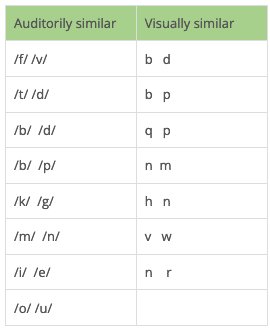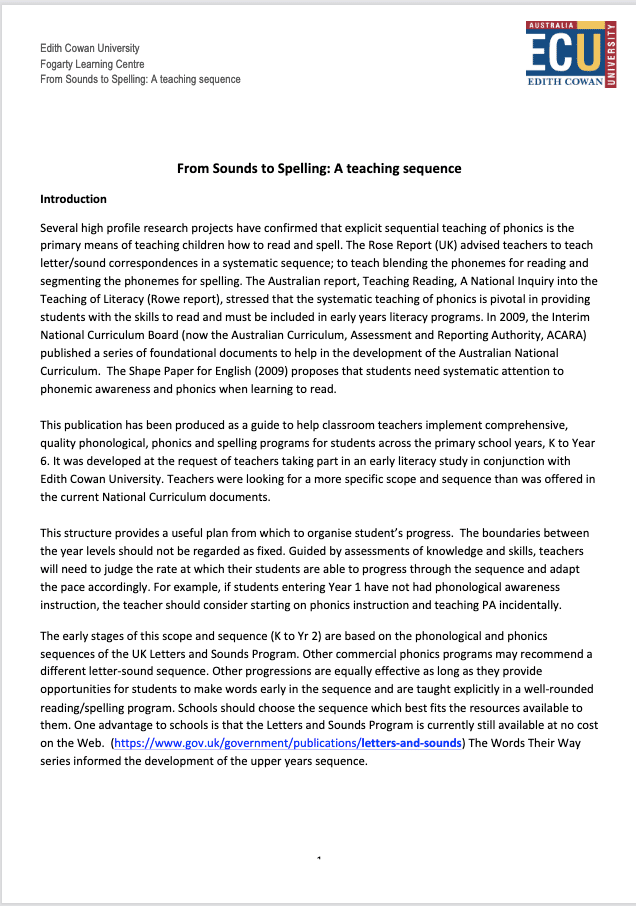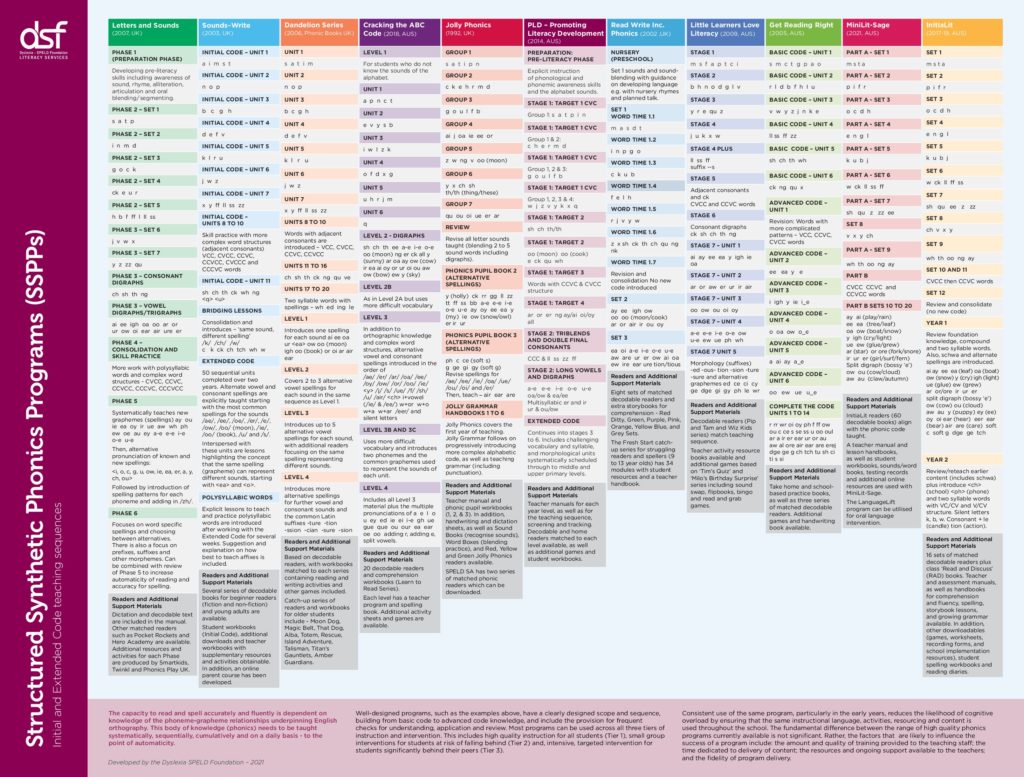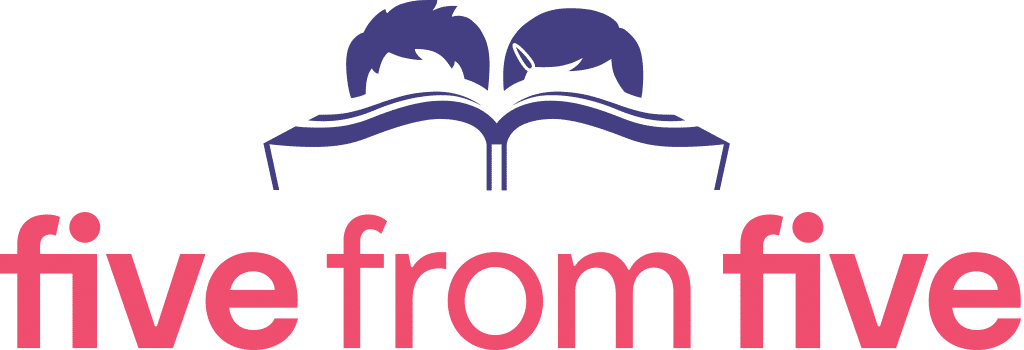Scope and sequence
Home » Phonics » Essential principles of systematic and explicit phonics instruction » Scope and sequence
Many reputable phonics programs have their own carefully developed scope and sequence for introducing grapheme-phoneme correspondences (GPCs). If you are deciding on, or evaluating, a sequence there are some important guidelines to consider.
- Are visually and auditorily similar letters separated in beginning instruction?
- Are more useful GPCs introduced first? For example, s, a, and t are more useful than x, z, j, and q.
- Does the sequence begin with a small set of GPCs and build gradually?
- Single letters and sounds first before moving to digraphs, trigraphs and quadgraphs – this is the hallmark of a systematic approach.
- Teaching one sound per week is not sustainable. GPCs should be introduced at a rate of about 3 –6 per week, but this should ultimately be determined by student performance.
The scope and sequence chosen must be consistent with the GPCs presented in at least one set of the decodable readers used by the school to support early reading instruction. It is important that a whole school approach is used so that the language for learning is consistent across the classes and grades.
Using a set sequence of GPCs does not mean that alternative spellings are ignored. Children quickly become aware that there are spellings that differ to the simple code. Their own names are often the most obvious example of this (eg., Thomas, Phillip, Charlotte). This can be acknowledged and discussed using a grapheme-phoneme chart. A sequence simply facilitates learning of the alphabetic principle and ensures that all GPCs are learnt by all children.
Grapheme-phoneme charts are an important reference tool for beginning readers and should be accessible in the classroom and used consistently across the whole school. There are a variety of these available for free online, including from Phonics International.
Simple or beginning code
A systematic approach should build grapheme-phoneme knowledge from simple to complex. Anna Gillingham is quoted as saying instruction should move “as fast as you can but as slow as you must” so that all learners keep up. Not only should an approach be systematic, but it should be cumulative with opportunity to continuously check and reinforce previously learned content. There are several common sequences for the simple code. The sequences shown here are beginning sequences and the more complex code must also be taught systematically and explicitly.
Carnine‘s beginning sequence
a m t s I f d r o g l h u c b n k v e W j p y T L M F D I N A R E H G B x q z J Q
Example beginning sequence 1
s a t p i n m d g o c k e r u b h f l j w v x y z q
Example beginning sequence 2 – (Letters and Sounds Phase 2)
s a t p i n m d g o c k ck e u r h b f ff l ll ss j v j w v x y z q
General sequence for teaching GPCs and phonic decoding
- Individual consonants — b ,c ,d…
- Short vowels — a (cat)
- CCVC words (stop, frog) & CVCC words (jump, best)
- Consonant digraphs — ck (back)
- Long vowels in CVCe words (cake)
- Long vowels in CVVC words ai/ay (rain, may)
- R-controlled vowels — ar (bark)
- Diphthongs and other vowel patterns like vowel digraphs — oi/oy (join, boy), oo (spoon)
(Adapted from Beck & Beck, 2013, p. 40)
More complex or advanced code
Carnine et al (2017) recommend that students be introduced to letter combinations (digraphs and trigraphs, and eventually quadgraphs) once they know the most common sounds of about 20 single letters and can read passages made up of regular words at a speed of about 20 words per minute. Students who can read at this rate should have moved beyond the sounding out stage and be reading familiar words quickly and effortlessly. Others recommend introducing common digraphs (sh, th, ck, ch) earlier in the sequence. The research on this is not settled.
There is no set order for introduction of graphemes containing two or more letters, however the most useful letter combinations to teach are those that occur most frequently in early grade literature, such as th, er, ing, sh, wh, qu, ar, ee, or, ay, igh and ch. The order in which they are taught should be matched with the decodable readers used by your school.
From sounds to spellings: A teaching sequence
Edith Cowan University has published From Sounds to Spellings – A Teaching Sequence based on the Letters and Sounds program developed from the recommendations of the Rose Review. The description states that it has been produced as a guide to help classroom teachers implement comprehensive, quality phonological, phonics and spelling programs for students across the primary school years: K to 6. Click on the image below for the full document.
Scope and sequence charts for phonics programs commonly used in Australian schools
Source: Dyslexia SPELD Foundation (DSF, 2021).
Click on the image to enlarge or download.





